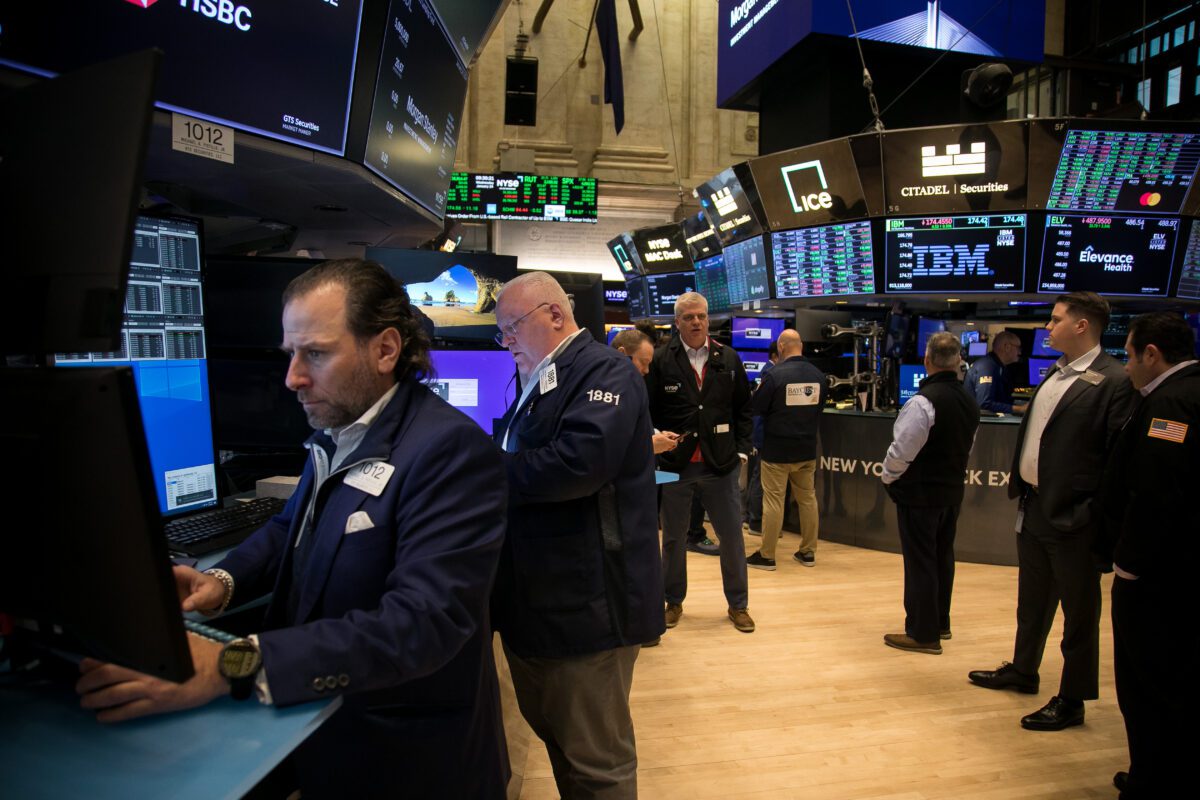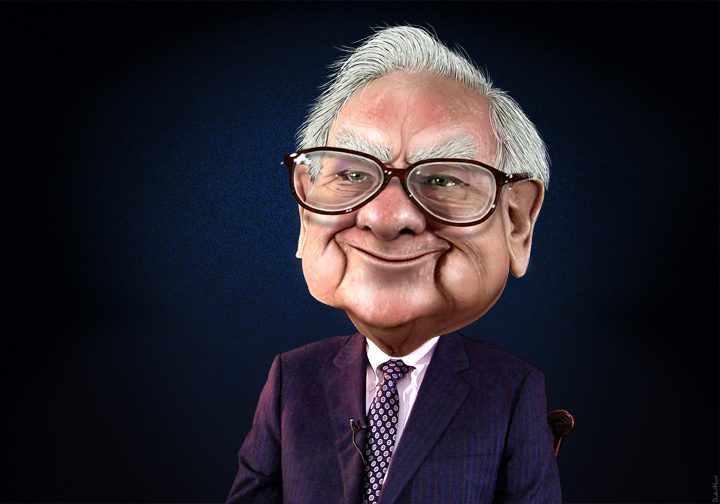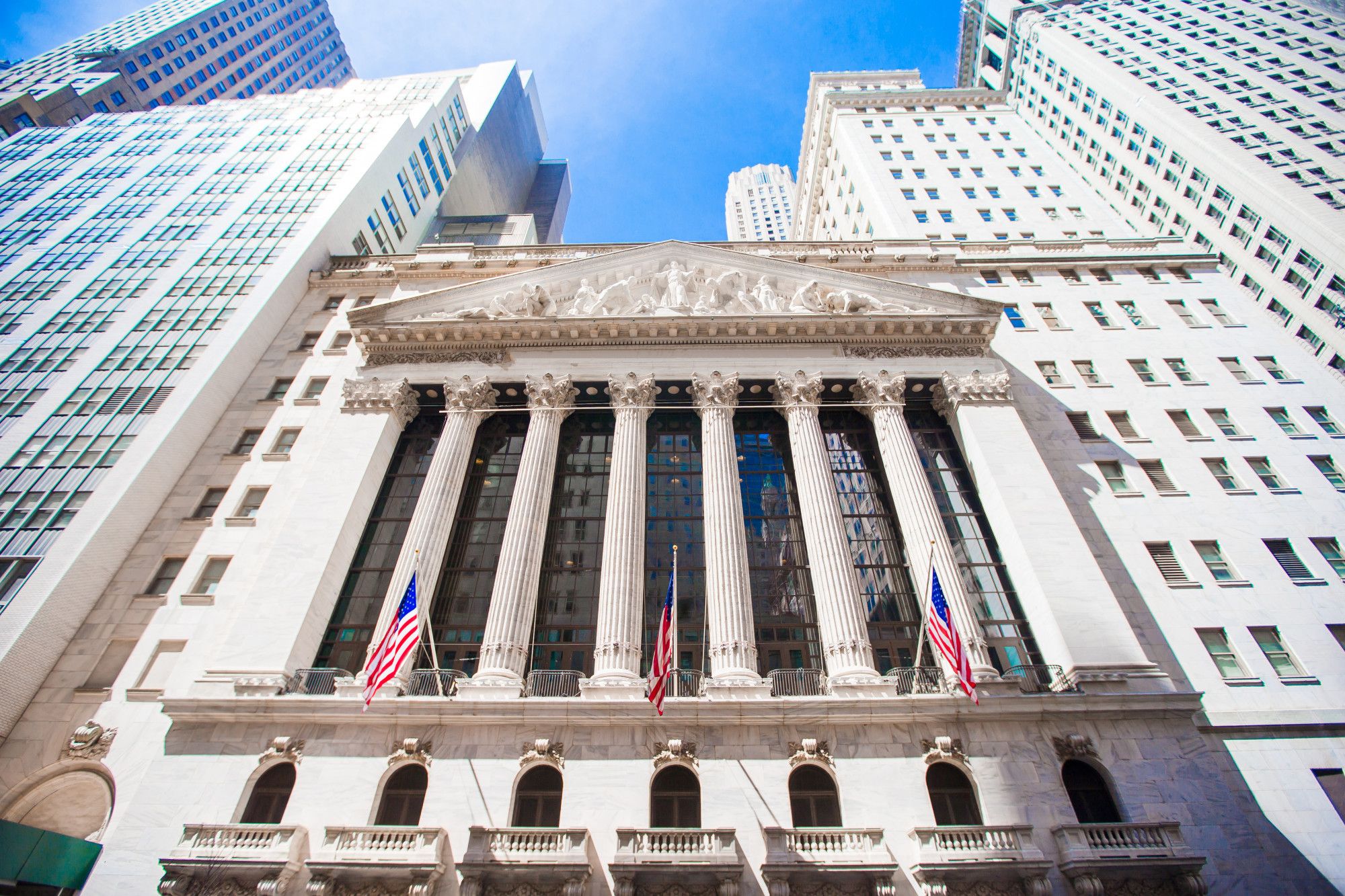Fed-Chef Jerome Powell heute mit einer lange erwarteten Rede beim Brookings-Institute – sie hat den Titel „The economic outlook, inflation, and the labor market“. Im Anschluss wird Jerome Powell die Fragen von David Wessel beantworten. Die Veranstaltung wurde im Vorfeld auf die Dauer von ca. einer Stunde avisiert.
Hier die wichtigsten Aussagen des Fed-Chef Powell in Headlines:
Hier der Live-Feed:
– Fed hat die Aufgabe, die Preise stabil zu halten
– Geldpolitik muß eine Zeitlang restriktiv bleiben
– Powell: HAVE MADE SIGNIFICANT PROGRESS TOWARD A SUFFICIENTLY RESTRICTIVE POLICY, BUT STILL HAVE MUCH GROUND TO COVER
– Oktober-Inflationsdaten waren nur Daten aus einem Monat, brauchen mehr Belege, dass Inflation zurück geht, Inflation bleibt deutlich zu hoch
– Powell: Zinsen müssen wohl stärker angehoben werden als wir im September dachten(„IT SEEMS TO ME PROBABLE TO ME RATES NEED TO ULTIMATELY GO SOMEWHAT HIGHER THAN POLICYMAKERS THOUGHT IN SEPTEMBER“)
– bislang wenig Belege, dass Arbeitsmarkt sich abkühlt und damit Lohn-Preis-Spirale nicht eintritt
– Powell: IT IS FAR TOO SOON TO DECLARE GOODS INFLATION DEFEATED, BUT IF THE CURRENT TREND CONTINUES, GOODS PRICES SHOULD BEGIN TO EXERT DOWNWARD PRESSURE ON OVERALL INFLATION IN THE COMING MONTHS
– Lieferengpässe scheinen sich zu entspannen
– FMW: Märkte preisen nun zu 75% einen 0,5% Zinsschritt i Dezember ein, 25% für 0,75%
– Powell wiederholt den Satz aus dem September: „we have a ways to go with interest rates before we get to the level that is sufficiently restrictive“
The key passage on monetary policy is more or less what Powell said at the November FOMC. These comments are consistent with an end to 75 basis point rate rises. pic.twitter.com/el1JM0RBaH
— Nick Timiraos (@NickTimiraos) November 30, 2022
Powell ist fertig, jetzt die Fragen von David Wessel:
Powell betont die steigende Bedeutung der Löhne und verweist auf den heutigen JOLTs-Report – Fed müsse Arbeitsmarkt ausbalancieren
Die Rede im Wortlaut:
Today I will offer a progress report on the Federal Open Market Committee’s (FOMC) efforts to restore price stability to the U.S. economy for the benefit of the American people. The report must begin by acknowledging the reality that inflation remains far too high. My colleagues and I are acutely aware that high inflation is imposing significant hardship, straining budgets and shrinking what paychecks will buy. This is especially painful for those least able to meet the higher costs of essentials like food, housing, and transportation. Price stability is the responsibility of the Federal Reserve and serves as the bedrock of our economy. Without price stability, the economy does not work for anyone. In particular, without price stability, we will not achieve a sustained period of strong labor market conditions that benefit all.
We currently estimate that 12-month personal consumption expenditures (PCE) inflation through October ran at 6.0 percent (figure 1).1 While October inflation data received so far showed a welcome surprise to the downside, these are a single month’s data, which followed upside surprises over the previous two months. As figure 1 makes clear, down months in the data have often been followed by renewed increases. It will take substantially more evidence to give comfort that inflation is actually declining. By any standard, inflation remains much too high.
For purposes of this discussion, I will focus my comments on core PCE inflation, which omits the food and energy inflation components, which have been lower recently but are quite volatile. Our inflation goal is for total inflation, of course, as food and energy prices matter a great deal for household budgets. But core inflation often gives a more accurate indicator of where overall inflation is headed. Twelve-month core PCE inflation stands at 5.0 percent in our October estimate, approximately where it stood last December when policy tightening was in its early stages. Over 2022, core inflation rose a few tenths above 5 percent and fell a few tenths below, but it mainly moved sideways. So when will inflation come down?
I could answer this question by pointing to the inflation forecasts of private-sector forecasters or of FOMC participants, which broadly show a significant decline over the next year. But forecasts have been predicting just such a decline for more than a year, while inflation has moved stubbornly sideways. The truth is that the path ahead for inflation remains highly uncertain. For now, let’s put aside the forecasts and look instead to the macroeconomic conditions we think we need to see to bring inflation down to 2 percent over time.
For starters, we need to raise interest rates to a level that is sufficiently restrictive to return inflation to 2 percent. There is considerable uncertainty about what rate will be sufficient, although there is no doubt that we have made substantial progress, raising our target range for the federal funds rate by 3.75 percentage points since March. As our last postmeeting statement indicates, we anticipate that ongoing increases will be appropriate. It seems to me likely that the ultimate level of rates will need to be somewhat higher than thought at the time of the September meeting and Summary of Economic Projections. I will return to policy at the end of my comments, but for now, I will simply say that we have more ground to cover.
We are tightening the stance of policy in order to slow growth in aggregate demand. Slowing demand growth should allow supply to catch up with demand and restore the balance that will yield stable prices over time. Restoring that balance is likely to require a sustained period of below-trend growth.
Last year, the ongoing reopening of the economy boosted real gross domestic product (GDP) growth to a very strong 5.7 percent. This year, GDP was roughly flat through the first three quarters, and indicators point to modest growth this quarter, which seems likely to bring the year in with very modest growth overall. Several factors contributed to this slowing growth, including the waning effects of reopening and of pandemic fiscal support, the global implications of Russia’s war against Ukraine, and our policy actions, which tightened financial conditions and are affecting economic activity, particularly in interest-sensitive sectors such as housing. We can say that demand growth has slowed, and we expect that this growth will need to remain at a slower pace for a sustained period.
Despite the tighter policy and slower growth over the past year, we have not seen clear progress on slowing inflation. To assess what it will take to get inflation down, it is useful to break core inflation into three component categories: core goods inflation, housing services inflation, and inflation in core services other than housing (figure 2).
Core goods inflation has moved down from very high levels over the course of 2022, while housing services inflation has risen rapidly. Inflation in core services ex housing has fluctuated but shown no clear trend. I will discuss each of these items in turn.
Early in the pandemic, goods prices began rising rapidly, as abnormally strong demand was met by pandemic-hampered supply. Reports from businesses and many indicators suggest that supply chain issues are now easing. Both fuel and nonfuel import prices have fallen in recent months, and indicators of prices paid by manufacturers have moved down. While 12-month core goods inflation remains elevated at 4.6 percent, it has fallen nearly 3 percentage points from earlier in the year. It is far too early to declare goods inflation vanquished, but if current trends continue, goods prices should begin to exert downward pressure on overall inflation in coming months.
Housing services inflation measures the rise in the price of all rents and the rise in the rental-equivalent cost of owner-occupied housing. Unlike goods inflation, housing services inflation has continued to rise and now stands at 7.1 percent over the past 12 months. Housing inflation tends to lag other prices around inflation turning points, however, because of the slow rate at which the stock of rental leases turns over.2 The market rate on new leases is a timelier indicator of where overall housing inflation will go over the next year or so. Measures of 12-month inflation in new leases rose to nearly 20 percent during the pandemic but have been falling sharply since about midyear (figure 3).
As figure 3 shows, however, overall housing services inflation has continued to rise as existing leases turn over and jump in price to catch up with the higher level of rents for new leases. This is likely to continue well into next year. But as long as new lease inflation keeps falling, we would expect housing services inflation to begin falling sometime next year. Indeed, a decline in this inflation underlies most forecasts of declining inflation.
Finally, we come to core services other than housing. This spending category covers a wide range of services from health care and education to haircuts and hospitality. This is the largest of our three categories, constituting more than half of the core PCE index. Thus, this may be the most important category for understanding the future evolution of core inflation. Because wages make up the largest cost in delivering these services, the labor market holds the key to understanding inflation in this category.
In the labor market, demand for workers far exceeds the supply of available workers, and nominal wages have been growing at a pace well above what would be consistent with 2 percent inflation over time.3 Thus, another condition we are looking for is the restoration of balance between supply and demand in the labor market.
Signs of elevated labor market tightness emerged suddenly in mid-2021. The unemployment rate at the time was much higher than the 3.5 percent that had prevailed without major signs of tightness before the pandemic. Employment was still millions below its level on the eve of the pandemic. Looking back, we can see that a significant and persistent labor supply shortfall opened up during the pandemic—a shortfall that appears unlikely to fully close anytime soon.
Comparing the current labor force with the Congressional Budget Office’s pre-pandemic forecast of labor force growth reveals a current labor force shortfall of roughly 3-1/2 million people (figure 4, left panel).4 This shortfall reflects both lower-than-expected population growth and a lower labor force participation rate (figure 4, right panel). Participation dropped sharply at the onset of the pandemic because of many factors, including sickness, caregiving, and fear of infection. Many forecasters expected that participation would move back up fairly quickly as the pandemic faded. And for workers in their prime working years, it mostly has. Overall participation, however, remains well below pre-pandemic trends.
Some of the participation gap reflects workers who are still out of the labor force because they are sick with COVID-19 or continue to suffer lingering symptoms from previous COVID infections („long COVID“).5 But recent research by Fed economists finds that the participation gap is now mostly due to excess retirements—that is, retirements in excess of what would have been expected from population aging alone.6 These excess retirements might now account for more than 2 million of the 3‑1/2 million shortfall in the labor force.7
What explains these excess retirements? Health issues have surely played a role, as COVID has posed a particularly large threat to the lives and health of the elderly.8 In addition, many older workers lost their jobs in the early stages of the pandemic, when layoffs were historically high. The cost of finding new employment may have appeared particularly large for these workers, given pandemic-related disruptions to the work environment and health concerns.9 Also, gains in the stock market and rising house prices in the first two years of the pandemic contributed to an increase in wealth that likely facilitated early retirement for some people.
The data so far do not suggest that excess retirements are likely to unwind because of retirees returning to the labor force. Older workers are still retiring at higher rates, and retirees do not appear to be returning to the labor force in sufficient numbers to meaningfully reduce the total number of excess retirees.10
The second factor contributing to the labor supply shortfall is slower growth in the working-age population. The combination of a plunge in net immigration and a surge in deaths during the pandemic probably accounts for about 1-1/2 million missing workers.11
Policies to support labor supply are not the domain of the Fed: Our tools work principally on demand. Without advocating any particular policy, however, I will say that policies to support labor force participation could, over time, bring benefits to the workers who join the labor force and support overall economic growth. Such policies would take time to implement and have their effects, however. For the near term, a moderation of labor demand growth will be required to restore balance to the labor market.
Currently, the unemployment rate is at 3.7 percent, near 50-year lows, and job openings exceed available workers by about 4 million—that is about 1.7 job openings for every person looking for work (figure 5). So far, we have seen only tentative signs of moderation of labor demand. With slower GDP growth this year, job gains have stepped down from more than 450,000 per month over the first seven months of the year to about 290,000 per month over the past three months. But this job growth remains far in excess of the pace needed to accommodate population growth over time—about 100,000 per month by many estimates. Job openings have fallen by about 1.5 million this year but remain higher than at any time before the pandemic.
Wage growth, too, shows only tentative signs of returning to balance. Some measures of wage growth have ticked down recently (figure 6). But the declines are very modest so far relative to earlier increases and still leave wage growth well above levels consistent with 2 percent inflation over time. To be clear, strong wage growth is a good thing. But for wage growth to be sustainable, it needs to be consistent with 2 percent inflation.
Let’s sum up this review of economic conditions that we think we need to see to bring inflation down to 2 percent. Growth in economic activity has slowed to well below its longer-run trend, and this needs to be sustained. Bottlenecks in goods production are easing and goods price inflation appears to be easing as well, and this, too, must continue. Housing services inflation will probably keep rising well into next year, but if inflation on new leases continues to fall, we will likely see housing services inflation begin to fall later next year. Finally, the labor market, which is especially important for inflation in core services ex housing, shows only tentative signs of rebalancing, and wage growth remains well above levels that would be consistent with 2 percent inflation over time. Despite some promising developments, we have a long way to go in restoring price stability.
Returning to monetary policy, my FOMC colleagues and I are strongly committed to restoring price stability. After our November meeting, we noted that we anticipated that ongoing rate increases will be appropriate in order to attain a policy stance that is sufficiently restrictive to move inflation down to 2 percent over time.
Monetary policy affects the economy and inflation with uncertain lags, and the full effects of our rapid tightening so far are yet to be felt. Thus, it makes sense to moderate the pace of our rate increases as we approach the level of restraint that will be sufficient to bring inflation down. The time for moderating the pace of rate increases may come as soon as the December meeting. Given our progress in tightening policy, the timing of that moderation is far less significant than the questions of how much further we will need to raise rates to control inflation, and the length of time it will be necessary to hold policy at a restrictive level. It is likely that restoring price stability will require holding policy at a restrictive level for some time. History cautions strongly against prematurely loosening policy. We will stay the course until the job is done.
Kommentare lesen und schreiben, hier klicken













Nicht reden ! Handeln ist angesagt ! Zinsen rauf und Bilanzen runter ! Und zwar deutlich- nicht so ein Wischi Waschi, wasch mich – aber mach mich nicht nass !
Zinsen rauf auf 6,5 Prozent und Bilanzen runter auf 5 Billionen, schon klappt’s auch mit der positiven Realverzinsung !
Aber nicht so ein 0, 5 er Schrittchen ! Das ist doch lächerlich !
Aha die Kurse zeigen, dass Powell kein Problem hat mit steigenden Märkten… interessiert niemanden wer was sagt. Die Gier ist im Markt und die bleibt so lange wie es Menschen gibt. Was Powell sagt oder nicht sagt, interessiert niemanden, es war schon vorher klar, dass der Markt nur noch hoch gehen wird.
Falke erwartet.
Taube geliefert.
Ho ho ho.
Auf zur Santa- Rällllliiiie!
Egal was Powel sagt, die Kurse steigen, ob DAX, DOW, Nasdaq, Euro, Gold, Silber.
Warum steigt sofort der Euro, weil Powel wieder paar Worte gesprochen hat ? Alles wird so ausgelegt um die Berechtigung zu haben die Kurse steigen zu lassen.
Es steigt weil die Märkte ihre Pappenheimer kennen: Umkipper, Haltlose, irgendwelche Ökonomie-Profs von der Straße, die halt grad da waren und Notenbankchef wurden.
Mit einem Wort: Ahnungslose. Nebelkapitäne.
Halbwertszeit von „Inflation besiegen“: 3 Sekunden.
Jetzt sind die Wahlen ja gewonnen für die DEMS.
Nun packt er ein und schreibt bald Bücher aus dem Ruhestand, Dschäi Powell.
Seit heute ist er „Long“ unterwegs.
Zur Not werden die nächsten Inflationszahlen „bereinigt“.
Neue Alltime-Highs dann mit den ersten Senkungen.
Was für ein jämmerlicher Zirkus um Nichts!
Was ein NON-EVENT. Also wenn Powell mit seinem außerordetlicher Temin zeigen wollte, dass ihm steigende Märkte nicht passen, ist das absolut in die Hose gegangen. Was sollte dieser unsichere Auftritt?! Warum reduziert man nicht einfach stärker die Bilanz und der Drops ist gelutscht. Die FED redet zu viel (heiße Luft) und handelt zu wenig.
FREEE MONEY for ALLL …all day night LONG… es regnet einfach weiter Geld, holt Bettlacken aus dem Schrank und fangt es auf! Wen interessiert Inflation, wenn es unendlich viel Geld gibt, welche auch noch regnet. Braucht man jetzt 100 Euro für ein Brötchen, ja dann nimm dir 100 Euro aus der Luft und kauf dir das Brötchen… no problem
Herr Fugmann, vielen Dank für nichts. Seit 2 Monaten schaue ich mir jedes Video an… habe mit Investiionen im DAX gewartet. bla bla bla Rezession ist das neue Problem für die Aktienmärkte. Nur negativ bezüglich dem Aktienmarkt. Und was passiert, die Aktienmärkte explodieren!!!
@Jens, Sie treffen Ihre Entscheidung, ich meine Entscheidungen. Was wollen Sie? Hätten Sie danke gesagt im umgekehrten Fall? Die Bewegung kommt – und sehr bald..
Ich habe mir am Wochenende The Big Short angeschaut! Ich musste sehr an sie denken. Sie haben die ganze Zeit Recht, genauso wie Michael Burry. Irgendwann haben sie Recht. Michael Burry musste auch zwei Jahre lang warten.
Habe seit heute noch mehr Zweifel an diesen Aussagen @ Markus Fugmann.
Man wird es einfach nicht zulassen (können).
Zur Not gibt es Wirtschaftszahlen die so echt sind wie die chinesischen…
Big Money und die Demokraten werden die Rallye halten.
Powell wird die Probleme verschieben und an den Nachfolger weiter geben.
So langsam geht mir dafür aber auch langsam die Zuversicht bei diesem Marktverhalten aus. Was will der Markt denn noch hören (There is „still a long way to go“ und eig. hat doch nochmal seine letzten Statements unterstrichen, oder was verstehe ich nicht)?
„Die Bewegung kommt – und sehr bald..“
Mutiges Statement – und absolut richtig.
Hallo Herr Fugmann, danke für ihre super zusammengefassten und auf den Punkt kommentieren Texte, insbesondere zu den FED Meetings und FOMC-Protokollen. Danke und bitte weiter so! ( Auch die Kommentare hier sind hilfreich, um die Marktlage einzuschätzen. ) @ Jens Müller: Ich denke, die Rezession wird noch eingepreist. Nur nur noch nicht jetzt. Noch kann der Aktienmarkt das bequem ignorieren. Keiner weiß, wann es passiert. Irgend wann kommt der Trigger. – Z.B. sehr bald, wenn aus steuerlichen Gründen Geld aus dem Markt läuft oder m.E. noch wahrscheinlicher im nächsten Jahr, wenn die earning recession deutlicher wird, die gar nicht zu vermeiden ist, schon weil China z.Z. keinen Bock hat, die Weltwirtschaft wieder anzukurbeln und statt dessen lieber systembewahrende lockdowns zelebriert (waren zumindest wohl so gedacht :-) ) . (Soweit ich weiß war China nach 2008 ein wesentlicher Faktor die Weltwirtschaft wieder in Fahrt zu bringen. Entfällt jetzt.) – Zudem muss man bedenken, dass wir aus charttechnischer Sicht sehr bald Rücksetzer sehen könnten. – Außerdem habe ich heut wieder ein paar graue Schwäne vorbeiziehen sehen. Mal sehen, ob bald einer landet. – Im übrigen sind mittlerweile auch etliche Trader und Macro-Trader weltweit mittlerweile vorsichtig. – Mein persönlicher Fahrplan sieht wie folgt aus: Monatsanfang unklar, nach dem 12.12. Weihnachtsrally. Irgendwann im nächsten Jahr gibt es einen größeren Rücksetzer wegen der Rezession. Ist jedoch nur ein Fahrplan und wie Bahn hält sich auch die Börse nicht immer daran. Und wie bei der Bahn sind Kurzstreckenzüge meist viel kalkulierbarer als der Fernverkehr. – VG und allen vorab eine frohe Jahresendralley
Guten Abend
Jeder Zeit seine Schlüsse. Ich muss Jens in der Hinsicht zustimmen, dass Ihre Sicht der Dinge schon mit an Sicherheit grenzender Wahrscheinlichkeit so interpretiert werden konnte, dass Jerome den Markt drücken möchte….da er die Rally nicht möchte, finanz. coditions.
Glauben Sie aufgrund der anderen Signale, invertierten Zinskurven, China, weitere wenn auch langsamere Zinsanstiege an den Move nach unten?
Ohne in eine Anlageberatung rutschen zu wollen, in welchem Zeitfenster könnten Sie sich das Vorstellen? lohnt es sich auf einen Einstieg zu warten? Ich treffe natürlich alleine meine Entscheidungen und dies ist hier nur persönliche Schlussfolgerung
Grüße
An den Märkten passiert immer das was alle NICHT erwarten!
Jeder erwartet eine Rezession jetzt, vor allem Lieschen Müller!
Wenn Dirk Müller, Markus Fugmann, Rocco Gräfe, Capital und Handelsblatt und BILD die drohende Falkenrede von Powell ausrufen wird garantiert „Taube“ geliefert!
Auch bei dem Gerede um Krisen und Rezession geht es um Klicks, Klicks, Klicks: wer bietet Schlimmeres? Weltuntergang, wer hat noch nicht, wer will nochmal?
Ich sehe hier bummvolle Läden bei uns und Menschen die ein Strompreis von 50 Cent/KwH nullkommanix schert. Preisbremse? Geh so a Schmarrn. I nehm nix vom Staat.
Gestern gab ein Herr neben mir am Schalter der KFZ-Werkstatt auf eine Rechnung von 271 Euro noch ein paar Zehner Trinkgeld für das Team.
Krisengequatsche, Pleiteticker, Weltuntergang, alles „Klick-Fische“.
Selbst denken hilft enorm!
Anstiege wie heute (4,5% Nasdaq) passieren nicht in gemütlichen Bullenmärkten. Da gehen jetzt die Leute rein, die Angst haben was zu verpassen. Das ist nicht Überzeugung sondern pure FOMO. Das ist Geld, das genauso schnell wieder raus will…
@Jens Müller. Sie werden noch froh sein gewartet zu haben. Die Anleger schauen und hören viel zu sehr
auf die FED anstatt sich die weltweit invertierten Zinskurven zu Gemüte zu führen. Diese sind ein Fakt und
mehr als ein verlässlicher Vorbote. Ich darf nur daran erinnern wie sich die Notenbanken in Sachen
Inflation geirrt haben. Geduld wird sich auszahlen. Die Mehrheit der sog. Kleinanleger werden auch diesmal
sich die Augen reiben und in Masse der Verlierer sein. Bis Weihnachten wird sehr wahrscheinlich
nicht mehr viel passieren. Die Realität in der Wirtschaft und nicht die Notenvanken werden in Zukunft
sehr entscheidend sein. Es wird nicht geklingelt werden. Jeder muss aber selber analysieren (wichtig)
und SELBST entscheiden. Am besten anhand objektiver Wirtschaftsdaten und weniger den Showelementen
der Notenbanken.
Hallo Jens Müller, grds. ist es ja so, dass Sie immer Ihre eigenen Entscheidungen treffen. Niemand trifft ja die Entscheidung weil der oder der gesagt hat es soll steigen oder fallen. Auch Herr Fugmann kann die Zukunft nicht voraussehen…wenn Sie gewartet haben mit einem Einstieg, dann haben Sie den Vorteil, dass Sie nur an der Seitenlinie standen und kein Geld verdient haben…es gibt schlimmeres…außerdem ist die Wahrscheinlichkeit sehr hoch, dass der Markt auch irrational handelt, da die Big Player ja sehen, wo die Stoppkurse der Bären liegen und bis dahin wird der Markt ausgereizt…so ist das nun mal…wenn die Big Player dann ihre Neubewertung des Marktes durchgeführt haben, dann wird es wieder in die andere Richtung gehen…LG
Man hält es aus oder man lässt es! Ich bin auch kaputt mit 5 stellig.
Guten Abend Herr Fugmann,
ich verfolge ihre Videos auch seit Monaten. Denke sie haben Recht. Bei den hohen Zinsen und der Gesamtlage wird/muss eine größere Korrektur nach unten kommen. Bloß wann ist die Frage. Zurzeit herrscht wieder (Rallye)Gier und hoch gehts. Aber auf welcher Grundlage? Warte weiter ab und setze weiter auf sinkenden Kurse….den richtigen Zeitpunkt (auch wann es genau runtergeht) erwischt niemand. Auch nach unten setzend muss man abwarten (können).
Finde Ihre Videos jedenfalls sehr informativ. Danke und schönen Abend!
Ich gehe hier zum große Teil von einem Short Squeeze aus. Die Nervosität vor der Powellrede war doch ziemlich hoch. Letztendlich hat er nichts anderes gesagt wie das was man sowieso schon wusste.
Jetzt erst mal rauf, weil nur 0.5% eingepreist werden müssen statt 0.75%.
Die Worte waren ja heute nicht weniger hawkish als bei den vergangenen FED-Statements / Sitzungen.
Bei der Dez.-Tagung werden dann 0.5% verkündet, aber der Ausblick wieder sehr hawkish – oder es ist die Rezession – und bumms, wir bekommen den nächsten Abverkauf mit vielleicht sogar neuen Lows.
Man muss langsam den „Fahrplan“ in diesem ganzen Zirkus herauslesen können.
Buy the Dip. Es stimmt eben doch.
Bin seit heute Abend auch mit einer kleinen Position beim SP 500 auf die Shortseite gewechselt. Werde die Shorts dann weiter erhöhen, wenn der Markt weitersteigen sollte. Der heutige Tag war ein einziger Fakeausbruch. Powell hat eigentlich nichts positives gesagt. Er hat vielmehr die aktuelle Lage mit den 70 er Jahren verglichen. Wer nicht weiß was in den 70 er Jahren passiert ist, sollte sich schnell schlau machen.
Bleib mal locker Jens!
Herr Fugmann ist doch nicht für deine falsch getroffenen Entscheidungen verantwortlich. „Do your own research“ ist auf dem gesamten Kapitalmarkt die Devise. Das du dazu nicht in der Lage bist, zeigt dein unreflektierter Kommentar. Mal abgesehen, bist du jetzt ernsthaft auf http://www.finanzmarktwelt.de gekommen um das mitzuteilen?
Kauf bitte auf dem Top ein und beschwere dich, dass eine 0815 Person gesagt hat: „Leute verpasst nicht den Zug, es steigt bis auf 10.000 Punkte im S&P500 in den nächsten 4 Stunden“.
Herr Fugmann gibt lediglich seine eigene Analystenmeinung ab. Die Prognosen in den letzten Monaten wurden mit einer überdurchschnittlichen Trefferquote erfüllt. Alleine das er sich überhaupt die Mühe macht, sein Wissen der Allgemeinheit zur Verfügung zu stellen, sollte mit wesentlich mehr Abonnenten und vor allem auch dankbaren Zuschauern belohnt werden.
Vielleicht ist dein Geld besser bei einer Spende aufgehoben. Schon mal an das Tierheim gedacht?
Viele Grüße
Nicht salziger Jens